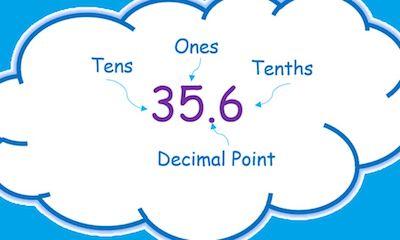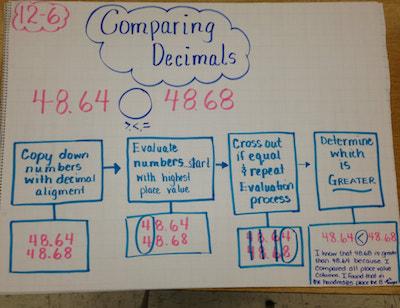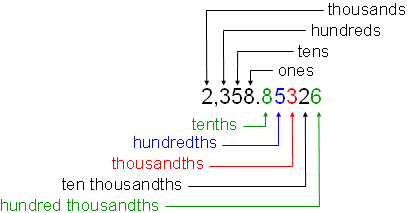A lot of math students tend to struggle with decimals. However, there isn’t a real reason for this. The truth is that as long as you understand how to compare decimals, you won’t ever struggle with that.
Discover everything you need to know about rounding numbers.

Before we proceed to the comparing decimals worksheet, we believe that it is better to explain to you exactly how you can easily compare decimals.
Comparing Decimals
Simply put, when you compare decimals, you are just trying to discover which part of a whole is greater. So, in order to make it easy, you just need to think about number 1. The reality is that 1 is a whole and all decimals are part of 1. So, this means that the close a decimal to 1, the larger the decimal is.
Let’s take a look at some practical examples.

W are going to start by showing you how you can easily compare two decimals that have the same number of digits in them:
0.45 ______ 0.67
The truth is that this is the simplest case of comparing decimals.
Learn how to round numbers to nearest thousand.
In this case, all you need to do is to look at the numbers without the decimal point and determine which number is greater. In this case, you would then compare 45 with 67. So, you can say that 67 is greater. So, you can then say that 0.45 < 0.67.
So, here’s the comparing decimals worksheet for this example:
- If the decimals you are comparing have the same number of digits in them, think about the value of the number without the decimal point.
- The larger the number, the closer it is to one.
Looking to round a number to the nearest hundred?
Let’s now take a look at a different example. This time, we will compare decimals with a different number of digits:
0.567 ______ 0.63
So, how can you compare these?
Well, it’s easy. All you need to do is to add zeros to the one that has fewer digits until both have the same number of digits. So, in this specific case, you would get:
0.567 ______ 0.630
And now, you can make use of the comparing decimals worksheet that we just mentioned above. If you compare the numbers without the decimal point, you will be comparing 567 with 630. So, you don’t have any doubts that 640 is greater which means that 0.567 < 0.640.
use our calculator to discover the nearest whole number.
A Different Approach

While we believe that we just showed you the best way to compare decimals, the truth is that it isn’t the only one. Some students prefer to compare decimals by looking at the digits at the right of the decimal point one by one.
So, you will start by looking at the tenths place. In this case, the decimal with the biggest value there is greater. In case they are the same, you will need to move to the hundredths place and compare these values again. If they are still the same, you will continue until you find a place where one is greater than the other.
This is how you round a number to the nearest tenth.
Here are some examples:

- 0.34 > 0.21: You only need to go as far as the tenths place to find that 0.34 is greater than 0.21.
- 0.67 < 0.68: The tenths are the same so we need to compare the hundredths.
- 0.7 > 0.59: This can trick people on a first quick look. We just need to look at the tenths though to see that 0.7 is greater than 0.59.
- 0.3 < 0.34: If you add a zero to the right of the 0.3 we can more easily compare the hundredths and see that 0.3 is less than 0.34.
- 0.562 > 0.561: Here the tenths and the hundredths values are the same. You need to go to the thousandths.
- 0.60 = 0.6: The zero to the right can be ignored.